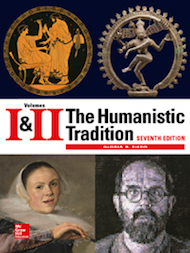Description
The Humanistic Tradition 7th Edition by Gloria K. Fiero – Test Bank
Chapter 05
The Classical Style
Multiple Choice Questions
1. A theoretical set of unifying rules of proportion that the ancient Greeks searched for was called
A. string theory.
B. dogma.
C. a canon.
D. a module.
Learning Objective: Identify classical characteristics in Greek painting, sculpture, and architecture.
Learning Objective: Identify examples of Vitruvius’ principles in classical art and architecture.
Topic: classical style
2. The Greek philosopher ________ tried to demonstrate the order of nature by observing geometric and numeric proportion.
A. Socrates
B. Agamemnon
C. Euripides
D. Pythagoras
Learning Objective: Identify classical characteristics in Greek painting, sculpture, and architecture.
Topic: History
Topic: classical style
3. The person responsible for “Hellenizing” North Africa and Central Asia was
A. Agamemnon.
B. Socrates.
C. Alexander the Great.
D. Darius the Great.
Topic: History
4.
Which of the following is NOT identified in the text as hallmarks of Greek art?
A.
Humanism
B.
Idealism
C.
Romanticism
D.
Realism
Learning Objective: Identify classical characteristics in Greek painting, sculpture, and architecture.
Learning Objective: Interpret the synthesis of humanism, realism, and idealism in the arts.
Topic: classical style
5. The main source of our information regarding Greek painting during the Golden Age has come down from
A. murals sealed within tombs.
B. decorated vases.
C. murals within Greek homes.
D. the writings of Polycleitus.
Learning Objective: Identify classical characteristics in Greek painting, sculpture, and architecture.
Topic: Art and Architecture
Topic: History
6.
The outstanding architectural achievement of the Golden Age in Athens is the
A. Pantheon.
B. Parthenon.
C. Acropolis.
D. weight-bearing column.
Learning Objective: Explain how the Parthenon is an example of High Classical culture.
Topic: Art and Architecture
Topic: History
Topic: classical style
7. The great temple of Athena in Athens uses which of the following orders?
A. Ionic
B. Doric
C. Corinthian
D. Post and Beam
Learning Objective: Explain how the Parthenon is an example of High Classical culture.
Topic: Art and Architecture

Reviews
There are no reviews yet.